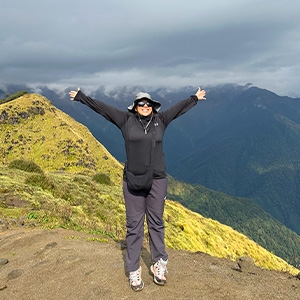Bhutan, known as the Land of the Thunder Dragon, is renowned for its rich customs, vibrant culture, and deep spiritual legacy. Among the numerous festivals that enhance its calendar, the Paro Tshechu Festival in Bhutan stands out as one of the most significant and revered celebrations. Rooted in religious reverence and historical significance, the Paro Tshechu festival summarizes the essence of Bhutanese identity, drawing both locals and tourists into its colorful tapestry of rituals, dances, and ancient customs.
The Paro Tshechu is one of Bhutan's most revered religious festivals, showcasing the country's rich cultural heritage and deep-rooted spiritual traditions. Held annually in the Paro Valley, this vibrant festival celebrates Bhutanese Buddhism, uniting communities in joyous festivities, religious observances, and social gatherings.
The festival typically lasts for several days, with the main events centered around the ancient Rinpung Dzong, a fortress-monastery symbolizing Bhutanese architecture and spirituality. Monks, dressed in elaborate costumes, perform sacred masked dances known as cham, which depict stories from Buddhist mythology and history. These dances are believed to invoke blessings, ward off evil spirits, and bring prosperity to the participants and onlookers.
The Gross National Happiness (GNH) concept of Bhutan has a strong connection to the Paro Festival, which represents the country's complete approach to social improvement and well-being. The festival represents the primary principles of GNH, which place a higher value on social happiness and spiritual fulfillment than financial prosperity and economic success, through its emphasis on spiritual devotion, cultural preservation, and community connection.
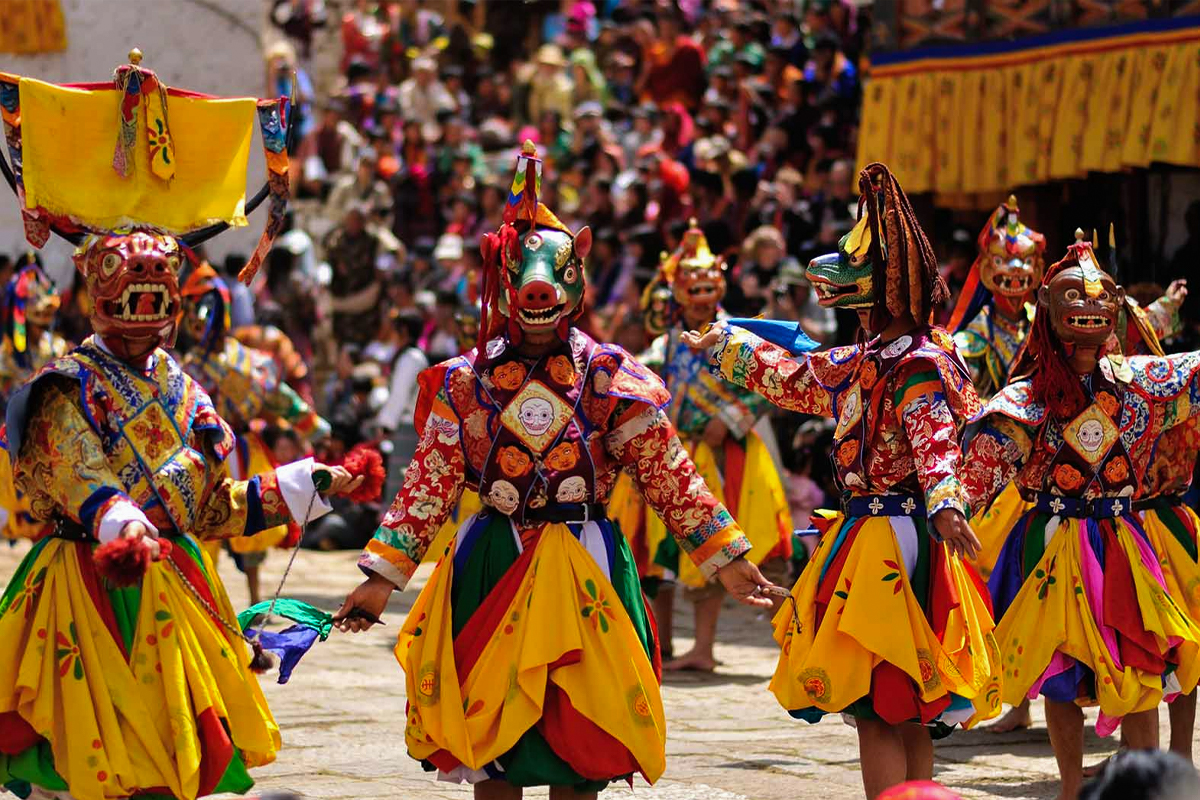
Origin and History of Paro Tshechu Festival in Bhutan
The Paro Tshechu has its roots in the 17th century and is closely associated with the history and legend of Bhutan. The festival is said to have been initiated by Gyalse Tenzin Rabgye, the fourth temporal ruler of Bhutan, who established the Paro Dzong in 1644. However, the origins of the Tshechu can be traced back even further to the teachings of Guru Rinpoche (Padmasambhava), the revered saint who introduced Buddhism to Bhutan in the 8th century.
Legend has it that Guru Rinpoche performed numerous miracles to defeat the demons and established the foundations of Buddhism in the region. One such miracle is believed to have occurred in Paro, where Guru Rinpoche is said to have manifested in eight different forms to defeat evil spirits and bless the land. The Paro Tshechu Festival is thus celebrated as one of these miraculous events and as a way to honor Guru Rinpoche's teachings and blessings.
Over the centuries, the Paro Tshechu evolved into a grand religious and social event, becoming an integral part of Bhutanese cultural and spiritual life. It serves not only as a religious observance but also as a means of promoting social unity, community bonding, and the preservation of Bhutan's unique traditions.
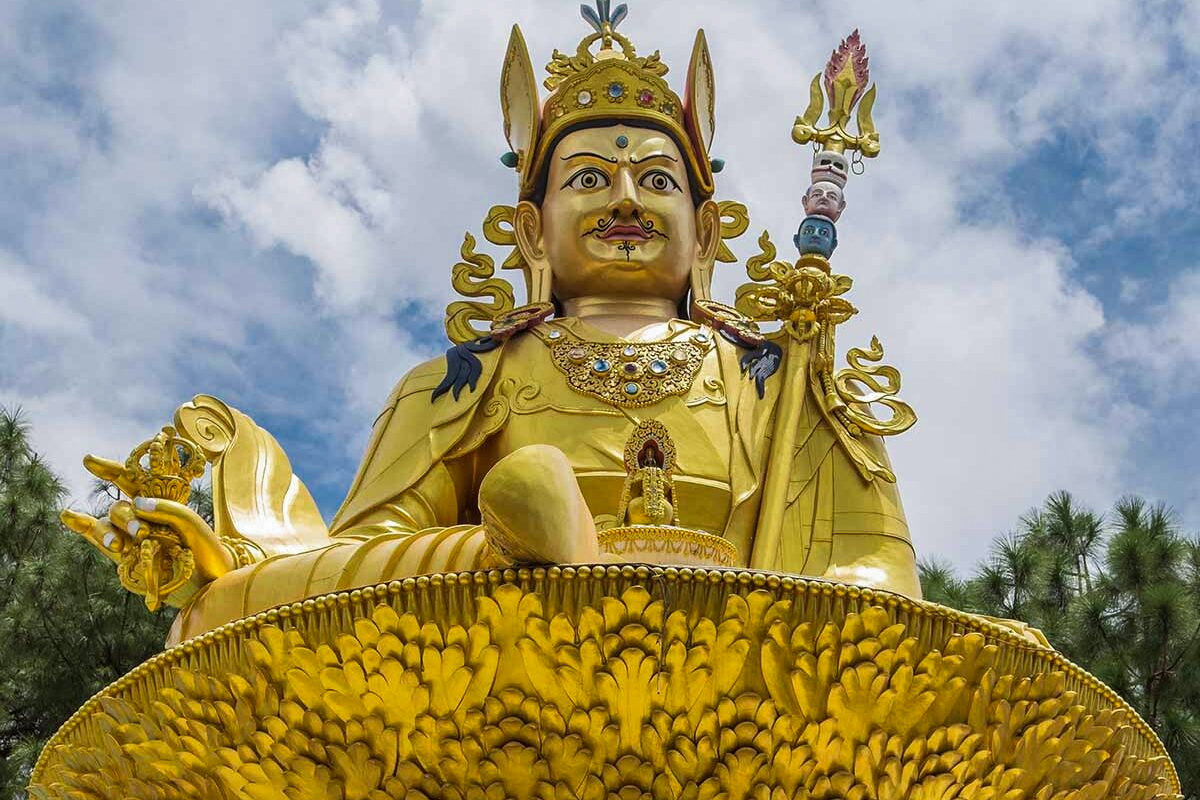
What is the meaning of 'Paro Tshechu'?
Paro is generally the name of a district in Bhutan, located in the western part of the country. It is one of the most historically and culturally significant districts in Bhutan, home to iconic landmarks such as the Paro Rinpung Dzong and the Taktsang Monastery (Tiger's Nest). The town of Paro, situated in the Paro Valley, serves as the center point for the Paro Tshechu Festival. The name "Paro" itself might not have a direct translation or specific meaning in Bhutanese culture beyond its association with the district.
Whereas, the term "Tshechu" translates to "tenth day" in Dzongkha, the official language of Bhutan. It refers to the religious festival held on the tenth day of a specific month in the Bhutanese lunar calendar. Tshechus are celebrated throughout Bhutan and are characterized by various religious ceremonies, masked dances (cham), cultural performances, and social gatherings. These festivals are significant occasions for both spiritual devotion and community bonding, with each Tshechu often having its unique rituals and traditions.
When is Paro Tshechu Celebrated?
Paro Tshechu is an annual festival that occurs on the tenth day of the second month in the Bhutanese lunar calendar, which typically corresponds to the spring season in the Gregorian calendar, often falling between March and April.
The exact timing of the Paro Tshechu varies each year according to the lunar calendar, as it is calculated based on astrological considerations and traditional customs. The event usually spans several days, with festivities culminating on the final day, which is the most significant. Hence, this year Paro Tshechu Festival takes place from 8th-12th April,2025.
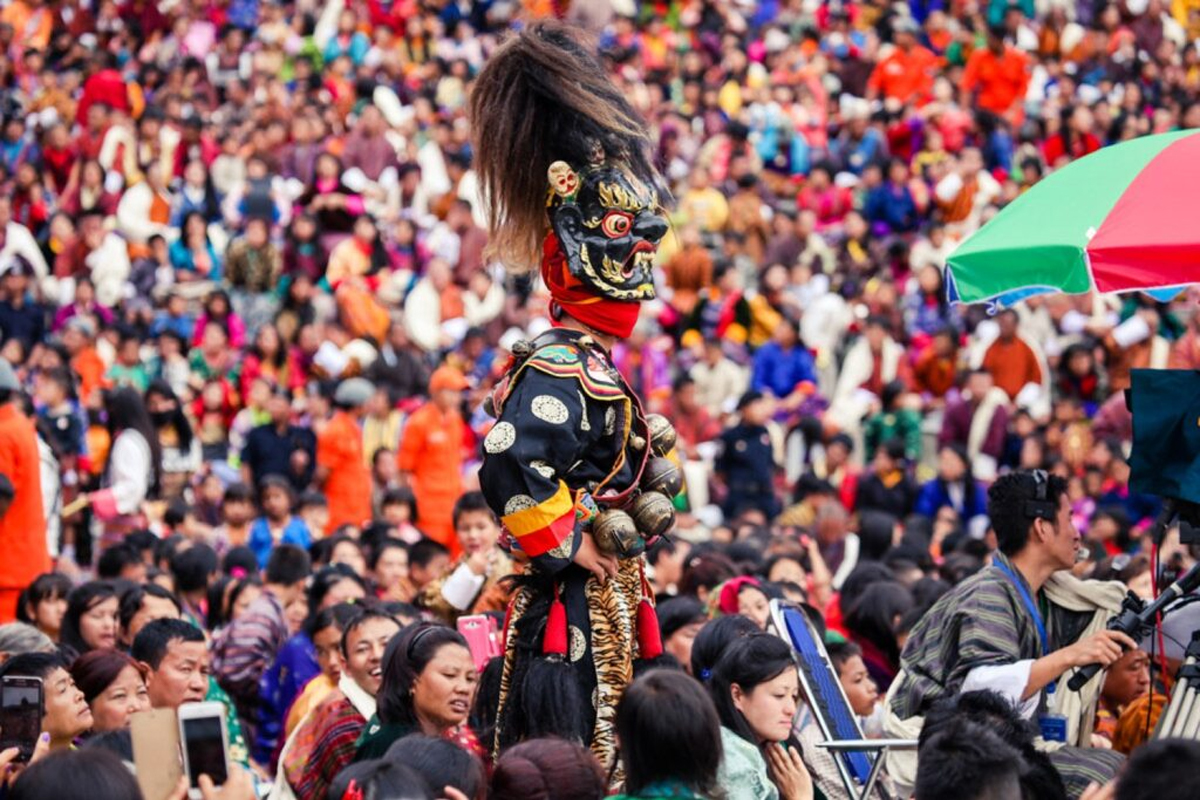
Significance of the Paro Tshechu Festival in Bhutan
The main significance of the Paro Tshechu extends beyond its religious roots, as it also played a strategic role in the consolidation of Bhutanese society and government. Historically, Tshechus served as occasion for the local populace to receive blessings from religious leaders, reaffirm their allegiance to the ruling authorities, and participate in the administration of justice.
Today, the Paro Tshechu Festival continues to uphold its historical and religious significance while also adapting to modern times. It remains a vital cultural institution in Bhutan, attracting thousands of pilgrims and tourists each year who come to witness the elaborate masked dances, receive blessings, and partake in the festive atmosphere.
The Paro Tshechu stands as a testament to Bhutan's rich cultural heritage, spiritual traditions, and enduring commitment to preserving its unique identity in an ever-changing world.
How is the Paro Tshechu Festival celebrated?
The Paro Tshechu typically spans five days, with each day featuring a series of religious ceremonies, cultural performances, and social gatherings. Here's a breakdown of how people celebrate the Paro Tshechu day by day:
First Day - Pre-festival Rituals
- On the first day, pre-festival rituals are conducted to prepare for the upcoming festivities.
- These rituals may include purification ceremonies, prayers, and offerings to invoke blessings for a successful and auspicious Tshechu.
Second Day - Shingje Yab Yum Dance
- Monks perform the Shinje Yab Yum dance inside the Paro Dzong on the second day.
- This dance, also known as the dance of the lord of death (Shingje), is a significant ritual that embodies spiritual themes of death, rebirth, and the cycle of existence.
- The dance is performed with intricate choreography and symbolic movements, reflecting the profound teachings of Buddhism.
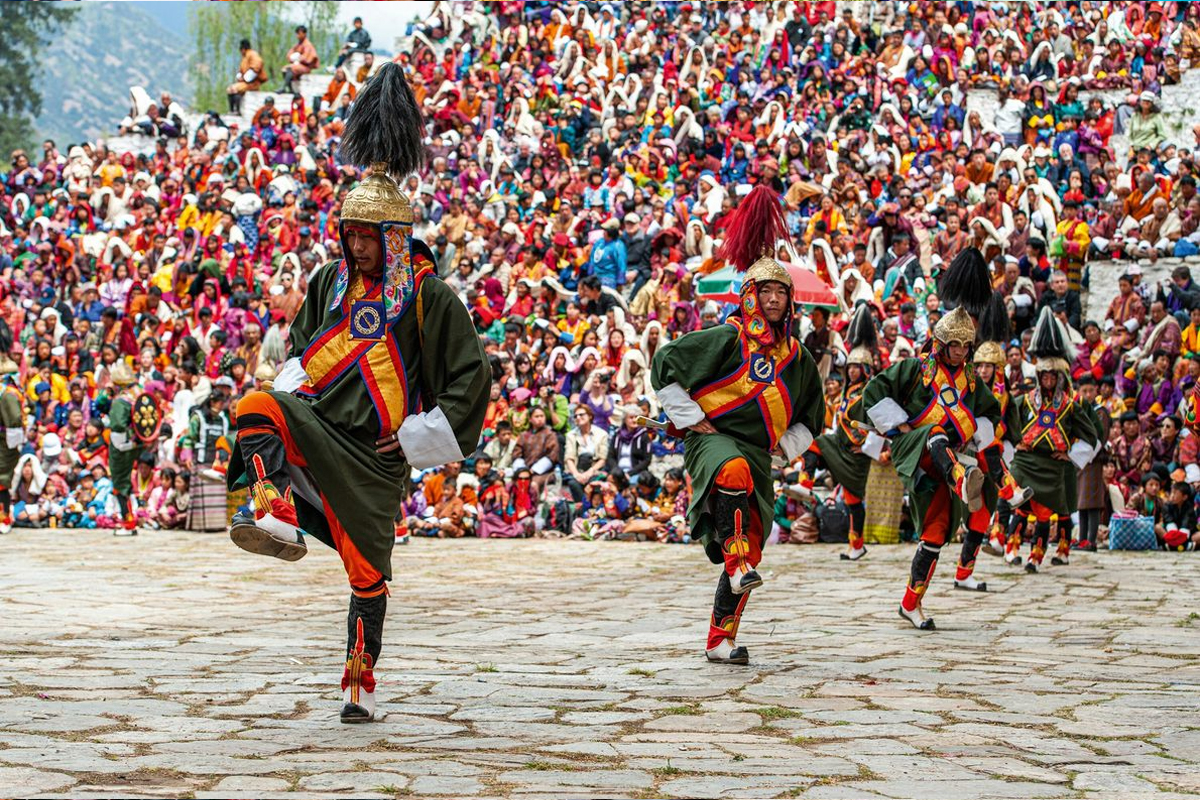
Third and Fourth Days - Festival Grounds Celebrations
- On the third and fourth days of the Paro Tshechu, festivities continue on the festival grounds, marked by a lively atmosphere of cultural performances and religious rituals.
- Monks and participants engage in traditional dances and dramas portraying religious narratives and moral teachings.
- The highlight of these days is the mesmerizing masked dances, where performers don elaborate costumes and silk masks depicting deities, demons, and historical figures.
- Attendees are dressed in their finest traditional attire, adding to the vibrant ambiance of the festival.
- People gather to offer prayers and pious wishes, fostering a sense of communal unity and spiritual devotion.
Fifth Day - The Thangka Unfurling
- On the fifth and final day of the Paro Tshechu, the festival culminates with the highly anticipated unveiling of the Thongdrol, a large thangka painting depicting Guru Rinpoche.
- Devotees gather at dawn to witness the auspicious moment when the Thongdrol is unfurled, believed to purify sins and bring spiritual merit to those who witness it.
- The unveiling of the Thongdrol is accompanied by prayers, chants, and ceremonial rituals conducted by Buddhist monks.
- It is a deeply revered and significant event, symbolizing the culmination of the festival's spiritual journey and the blessings bestowed upon the attendees.
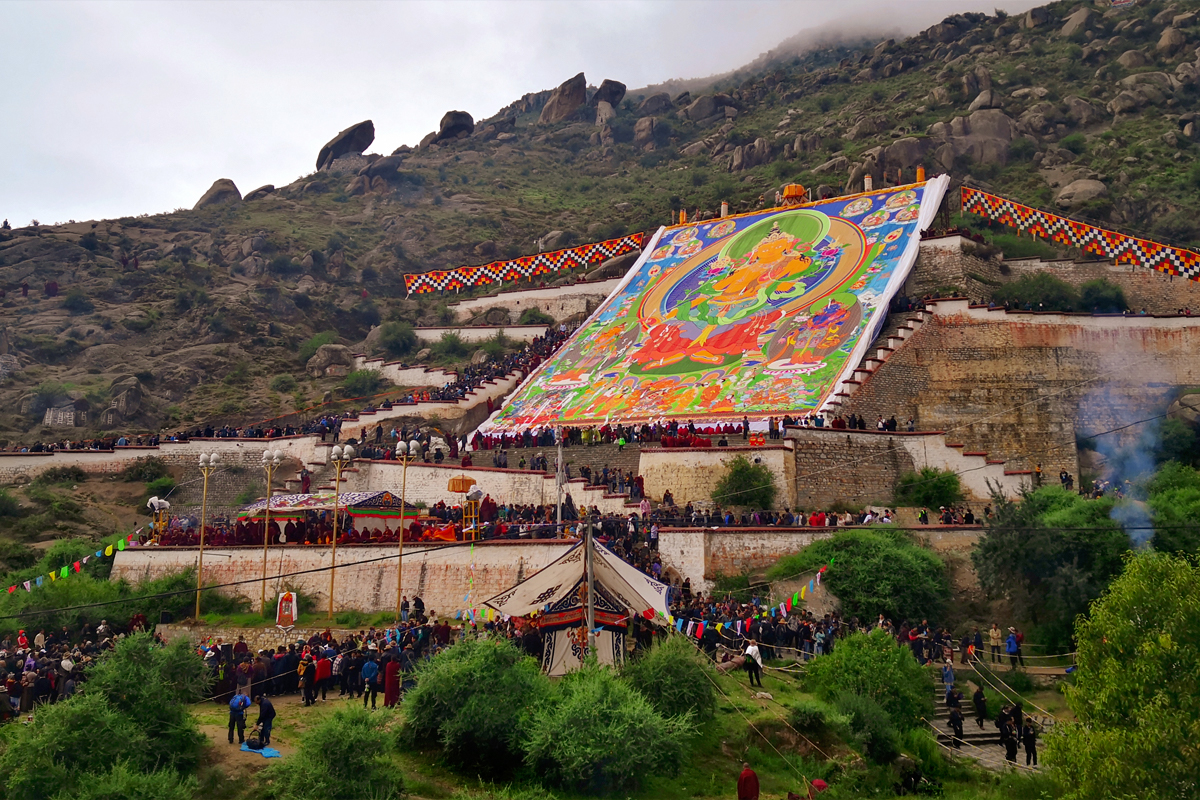
Special Delicacies during Paro Tshechu Festival
During the Paro Tshechu in Bhutan, several special delicacies are prepared and enjoyed by locals and visitors alike. These delicacies often reflect the rich culinary traditions of Bhutan and add to the festive atmosphere of the celebration. Some of the special delicacies commonly enjoyed during the Paro Tshechu include:
Ema Datshi
This iconic Bhutanese dish consists of chili peppers (ema) cooked in a creamy cheese sauce (datshi). It is a spicy and flavorful dish that is a staple of Bhutanese cuisine and is often served with rice or as a side dish during festive occasions.
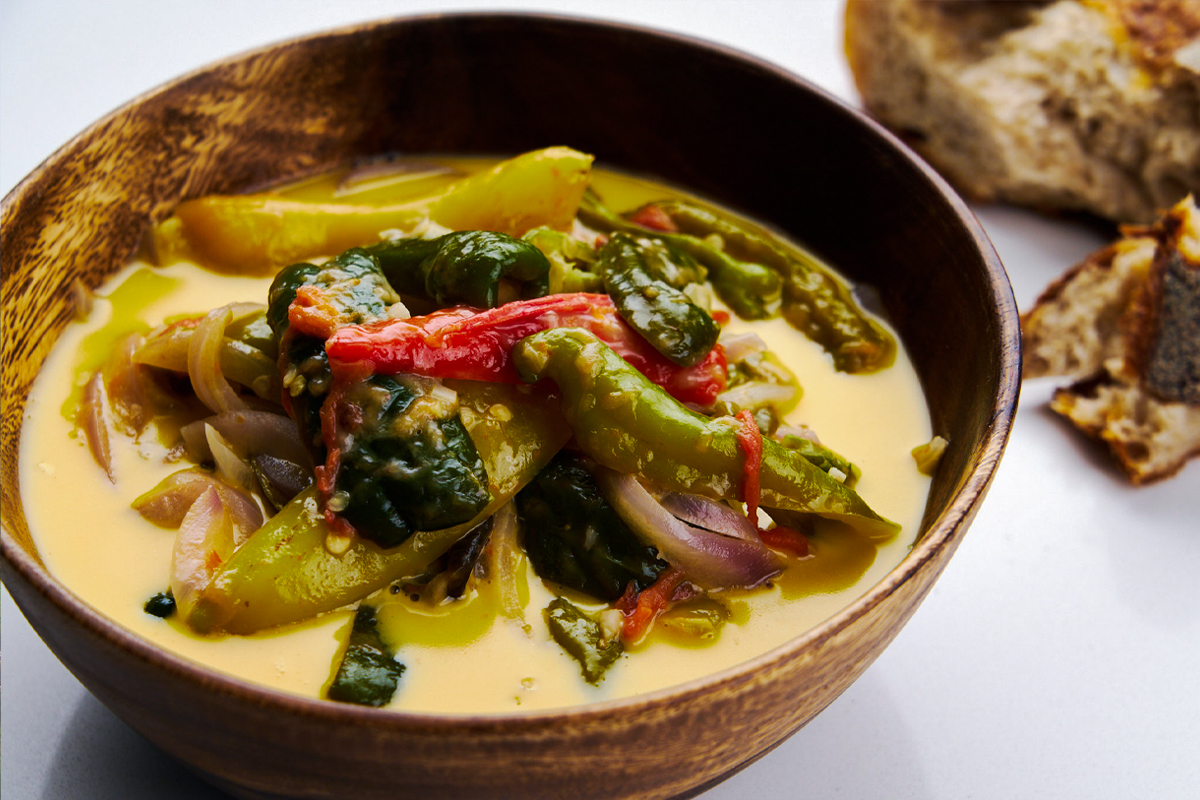
Momo
Momo are dumplings filled with meat or vegetables and then steamed or fried. They are a popular snack or appetizer in Bhutan and are often enjoyed during special occasions such as the Paro Tshechu. Momo can be served with dipping sauces or as part of a larger meal.
Red Rice
Red rice is a staple food in Bhutan commonly served during festivals and celebrations. It has a nutty flavor and a slightly chewy texture, and its distinctive red color adds visual appeal to any meal. Red rice is often served alongside other dishes such as curries or stews.
Suja
Suja is a traditional Bhutanese butter tea made from tea leaves, yak butter, salt, and sometimes milk. It is a rich and hearty beverage enjoyed throughout Bhutan, especially during cold weather or festive occasions like the Paro Tshechu. Suja is known for its warming properties and is often served as a gesture of hospitality to guests.
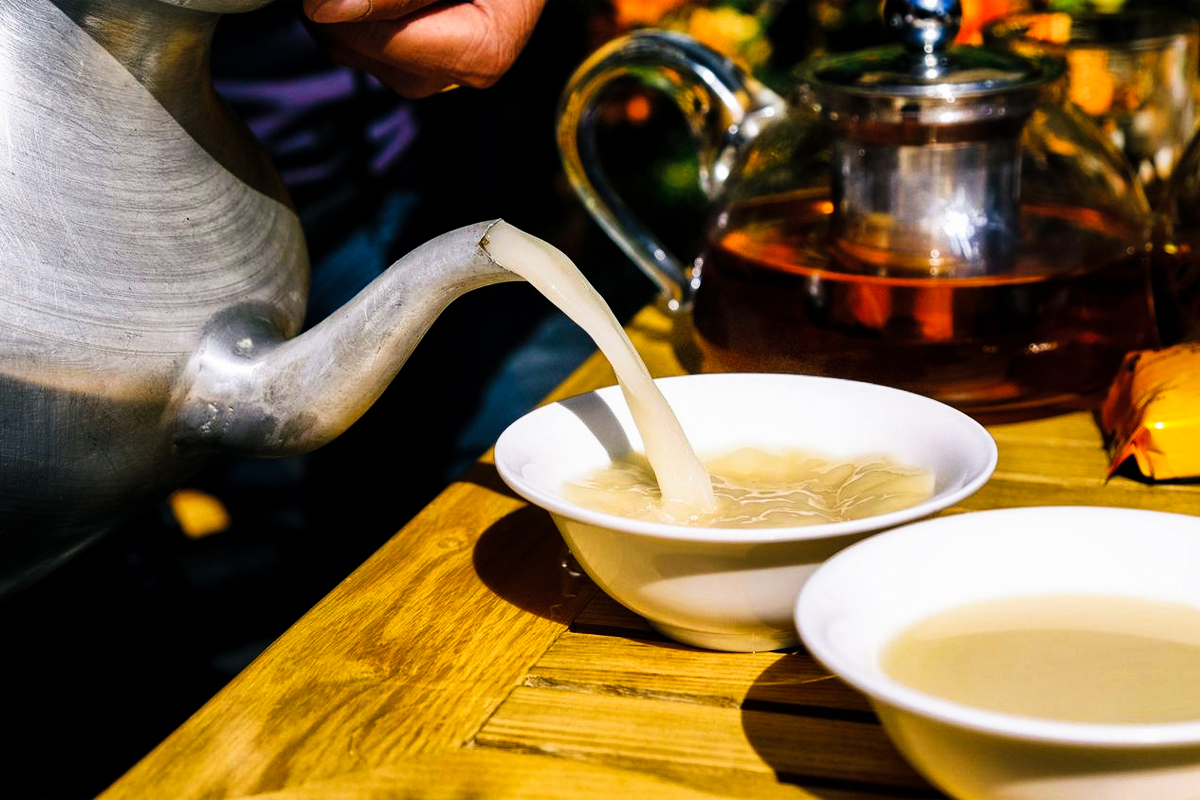
Doma
Doma is a popular after-meal treat in Bhutan and consists of betel nut wrapped in betel leaf along with various ingredients such as lime paste, cardamom, and cloves. It is chewed as a palate cleanser and digestive aid and is often offered to guests as a gesture of hospitality during festivals and celebrations.
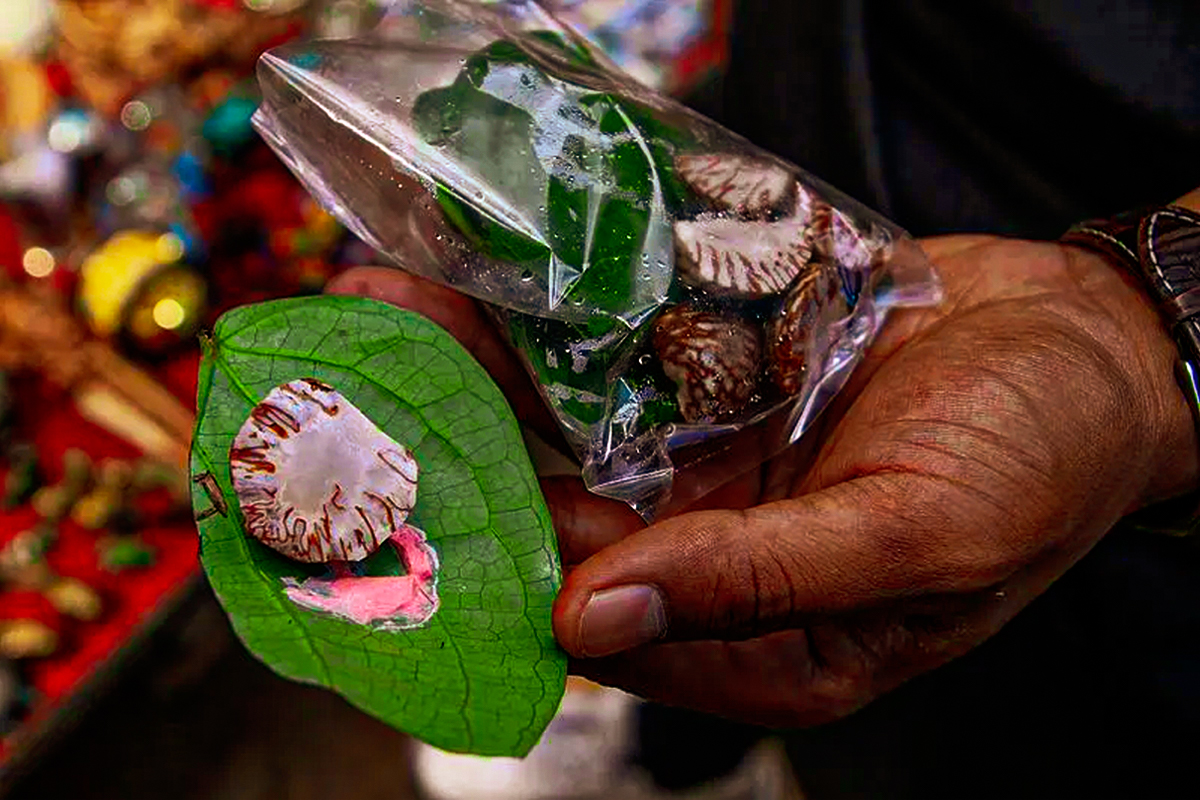
Major Highlights of the Paro Tshechu Festival
Masked Dances (Cham Dances)
- The Cham dances are among the most captivating aspects of the Paro Tshechu. Monks perform these sacred masked dances, each portraying different stories from Buddhist mythology and history.
- The Cham dances are believed to have spiritual significance, serving to ward off evil spirits, bring prosperity, and bestow blessings upon the spectators.
- The rhythmic movements, colorful costumes, and elaborate masks create a mesmerizing spectacle that enthralls both locals and visitors, offering a glimpse into Bhutanese religious and cultural traditions.
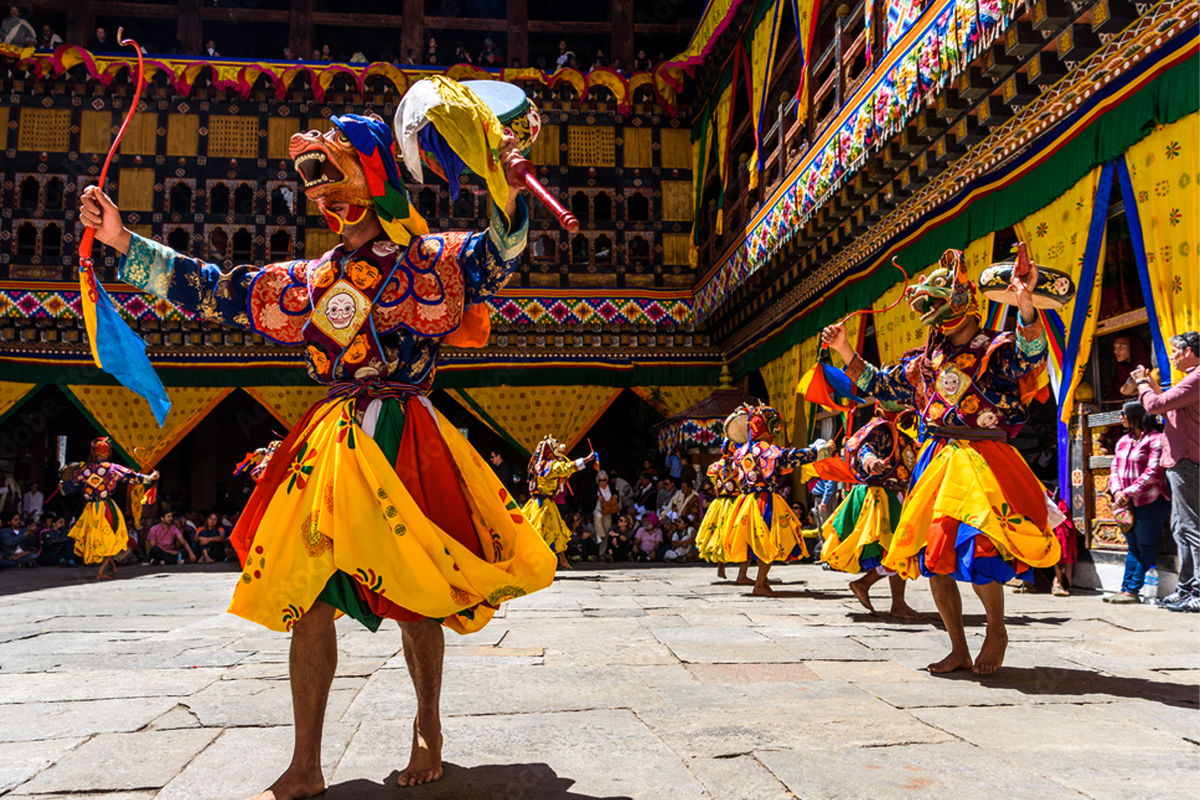
Thangka Unfurling
- Another major highlight of the Paro Tshechu is the unveiling of the Thongdrol, a large thangka painting of Guru Rinpoche, also known as Guru Padmasambhava.
- The Thongdrol is unfurled at dawn on the final day of the festival, and it is considered a highly auspicious moment.
- Devotees believe that merely witnessing the Thongdrol can purify sins and bring spiritual merit, making it a deeply revered and significant ritual during the Tshechu.
Social Gatherings
- In addition to its religious aspects, the Paro Tshechu is a time for social gatherings and reconnecting with friends and family.
- Locals dress in their finest traditional attire, with men wearing the gho and women donning the kira, adding to the festive ambiance.
- The festival grounds are bustling with activity, with stalls selling local crafts, delicacies, and religious artifacts. These stalls provide opportunities for interaction, cultural exchange, and shopping, enhancing the overall experience of the Tshechu.
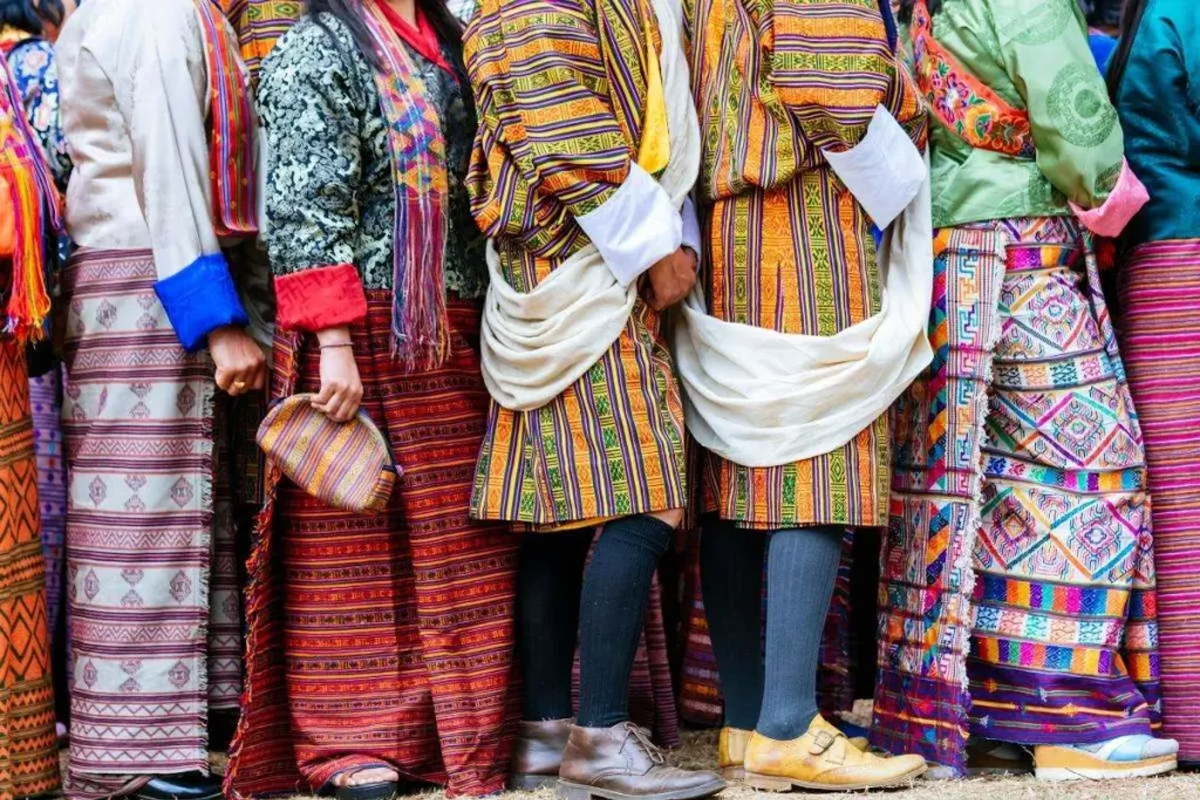
Tourism Promotion
- The Paro Tshechu serves as a significant platform for promoting cultural exchange and tourism in Bhutan.
- Visitors from around the world are drawn to the festival to witness its grandeur and immerse themselves in Bhutanese culture and hospitality.
- The influx of tourists during the Tshechu contributes to the local economy and helps support various tourism-related businesses, further highlighting the importance of the festival beyond its religious and cultural significance. Explore more about the Bhutan Cultural Tour, here.
Conclusion
The Paro Festival in Bhutan stands as a testament to the country's rich cultural heritage, spiritual traditions, and vibrant community spirit. This annual celebration, held in the picturesque Paro Valley, brings together locals and visitors alike in a joyous extravaganza of religious devotion, cultural expression, and communal bonding.
Beyond its religious significance, the Paro Festival also serves as a platform for cultural exchange and tourism promotion, attracting visitors from around the world to experience the warmth and hospitality of the Bhutanese people. So, if you are attracted by the rich history and celebrations of the Paro Festival in Bhutan, you can contact us to join this auspicious festival in Bhutan.












